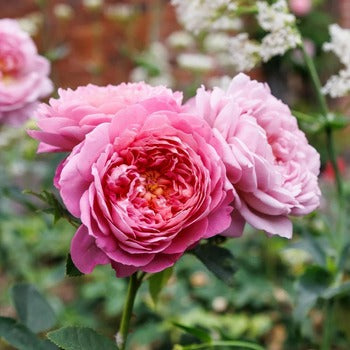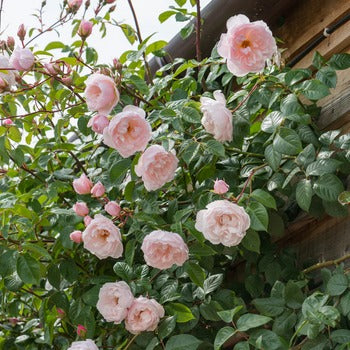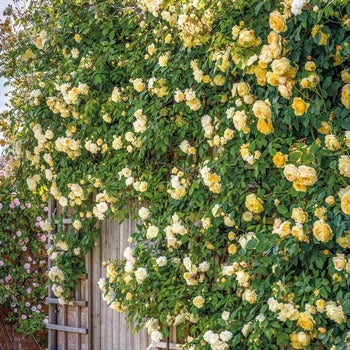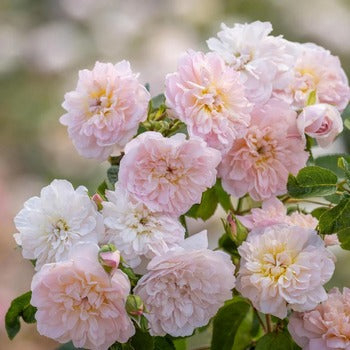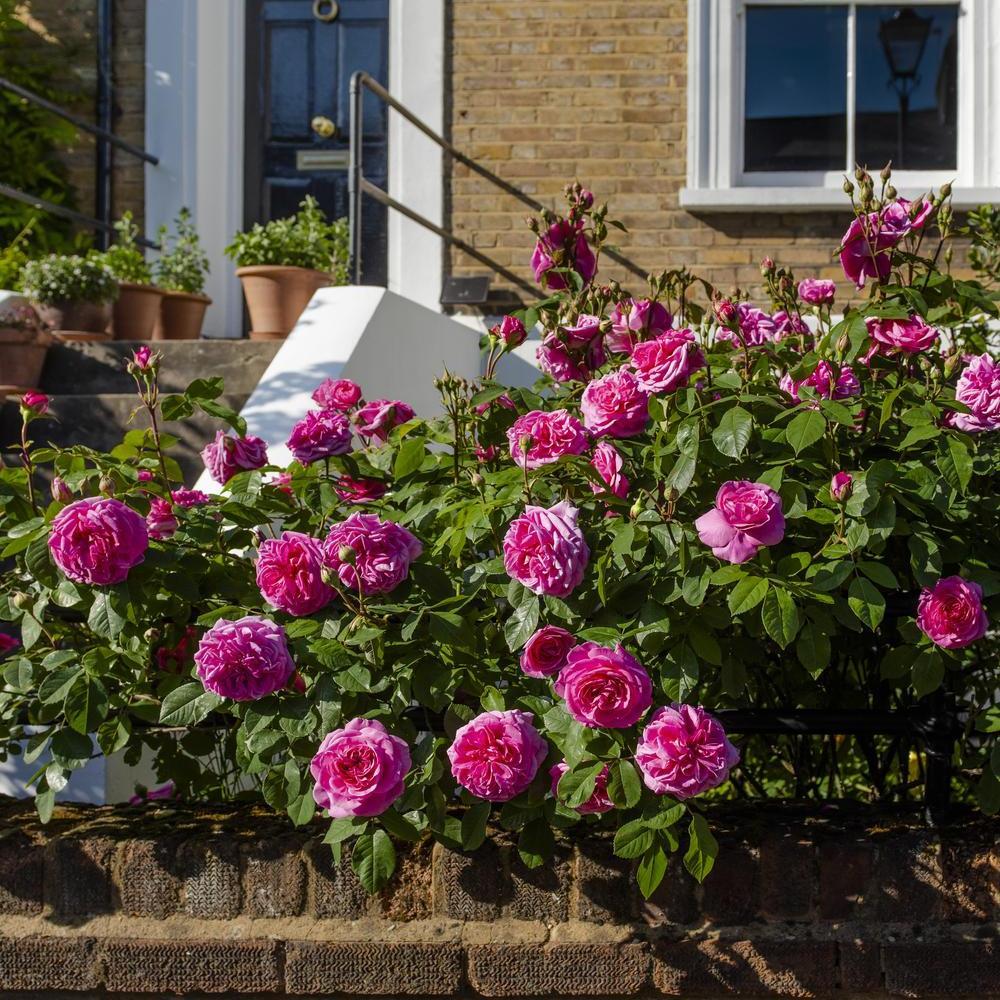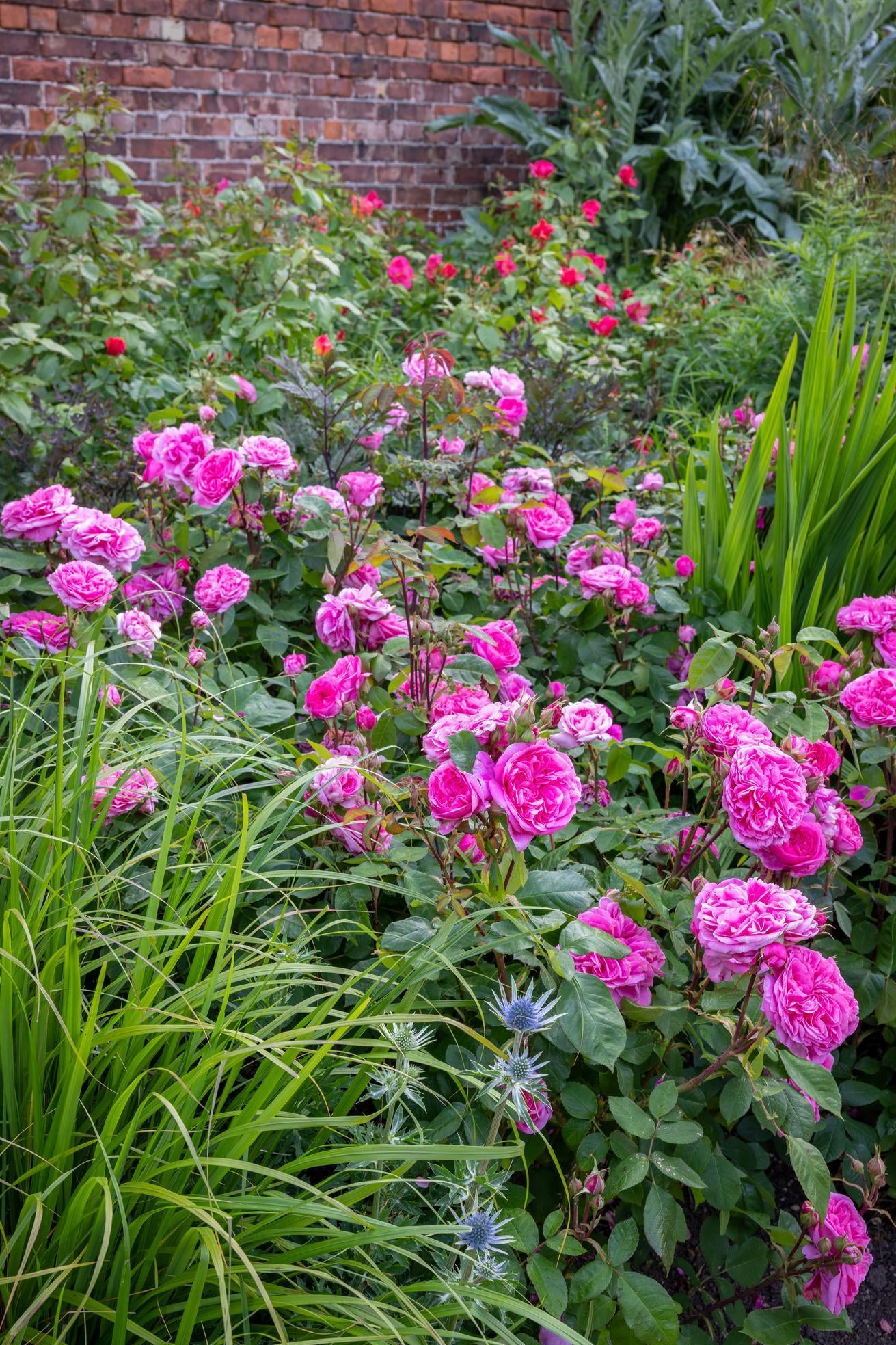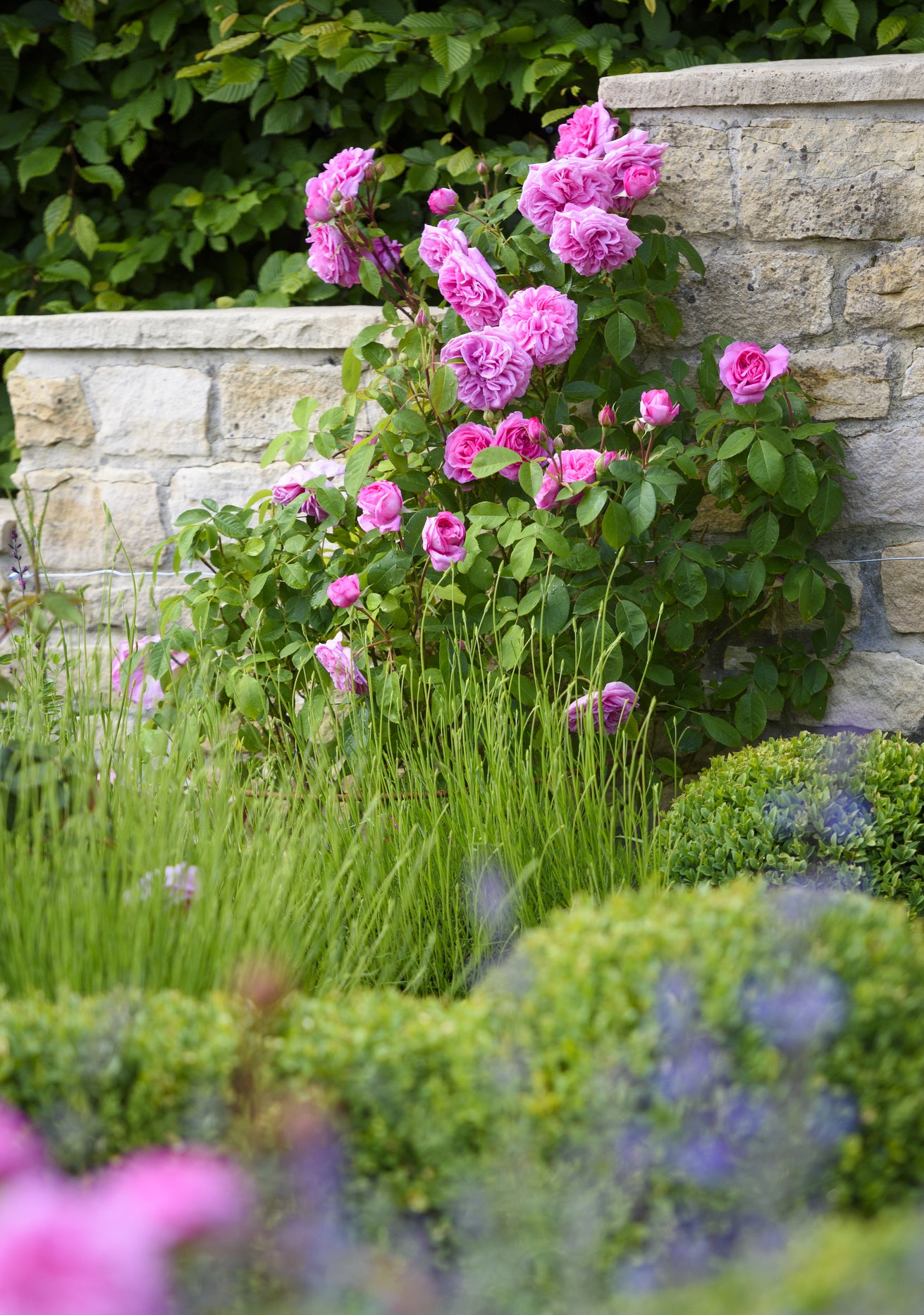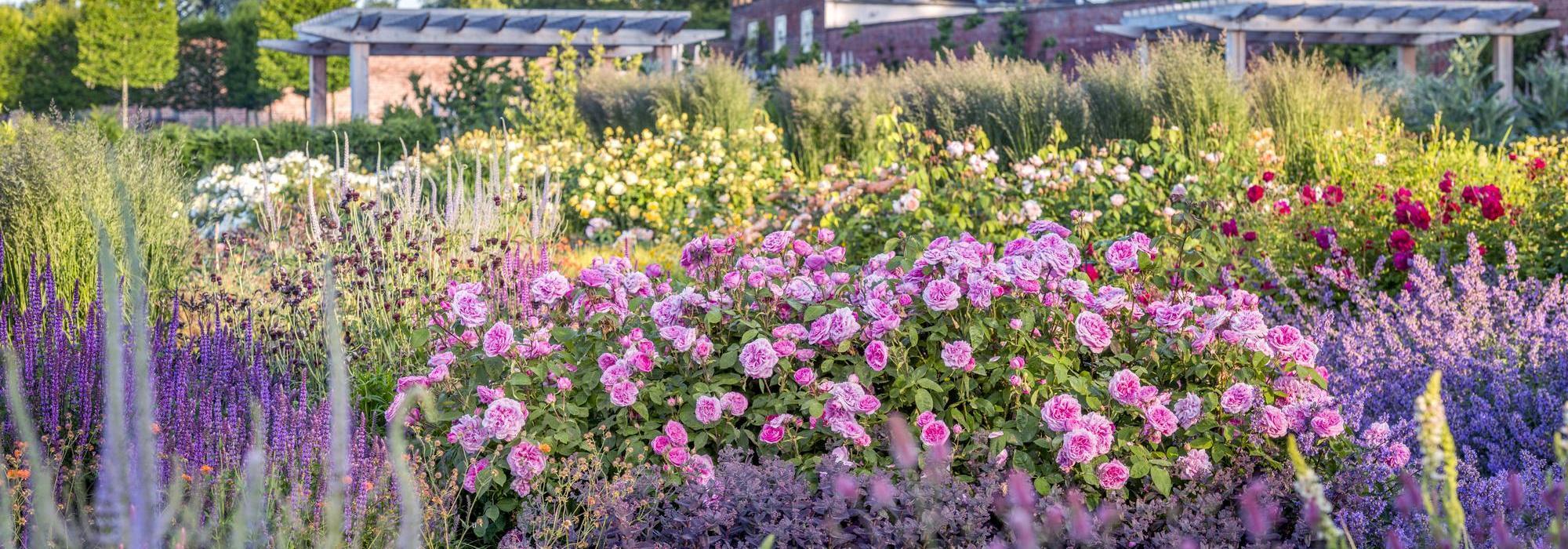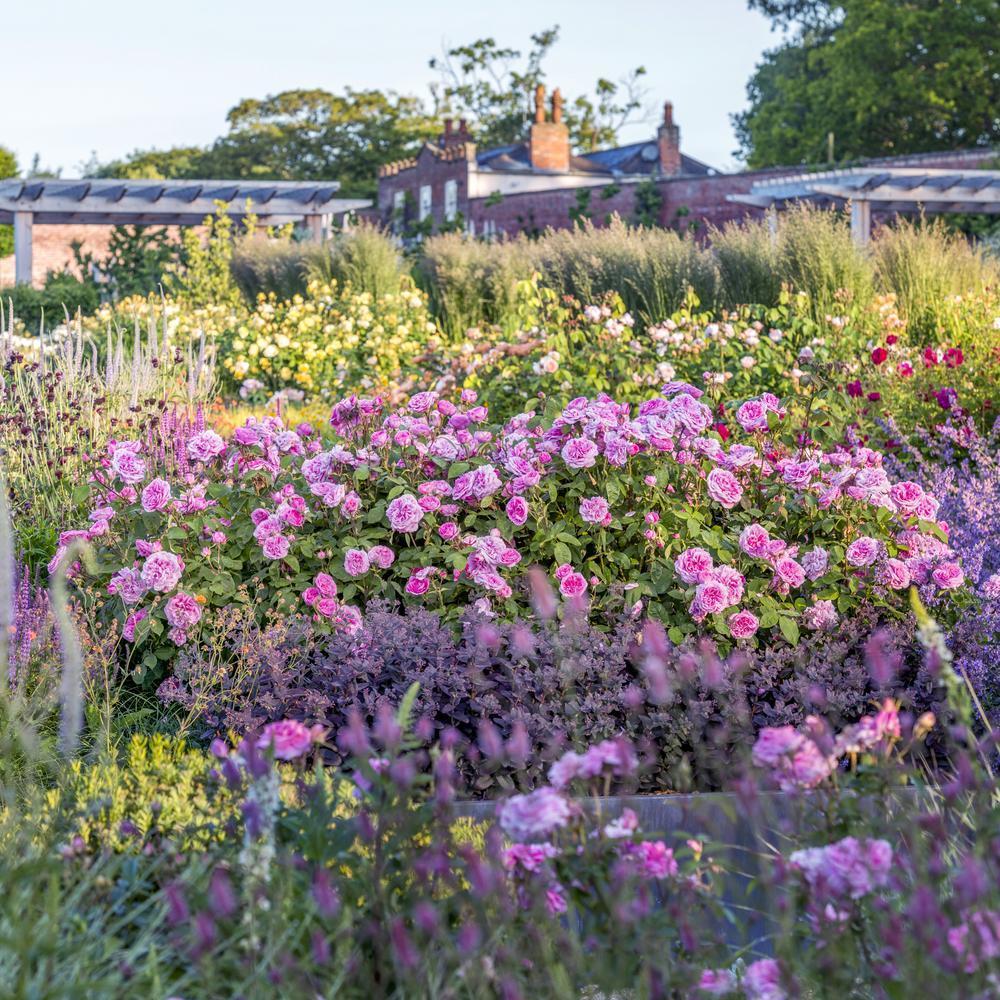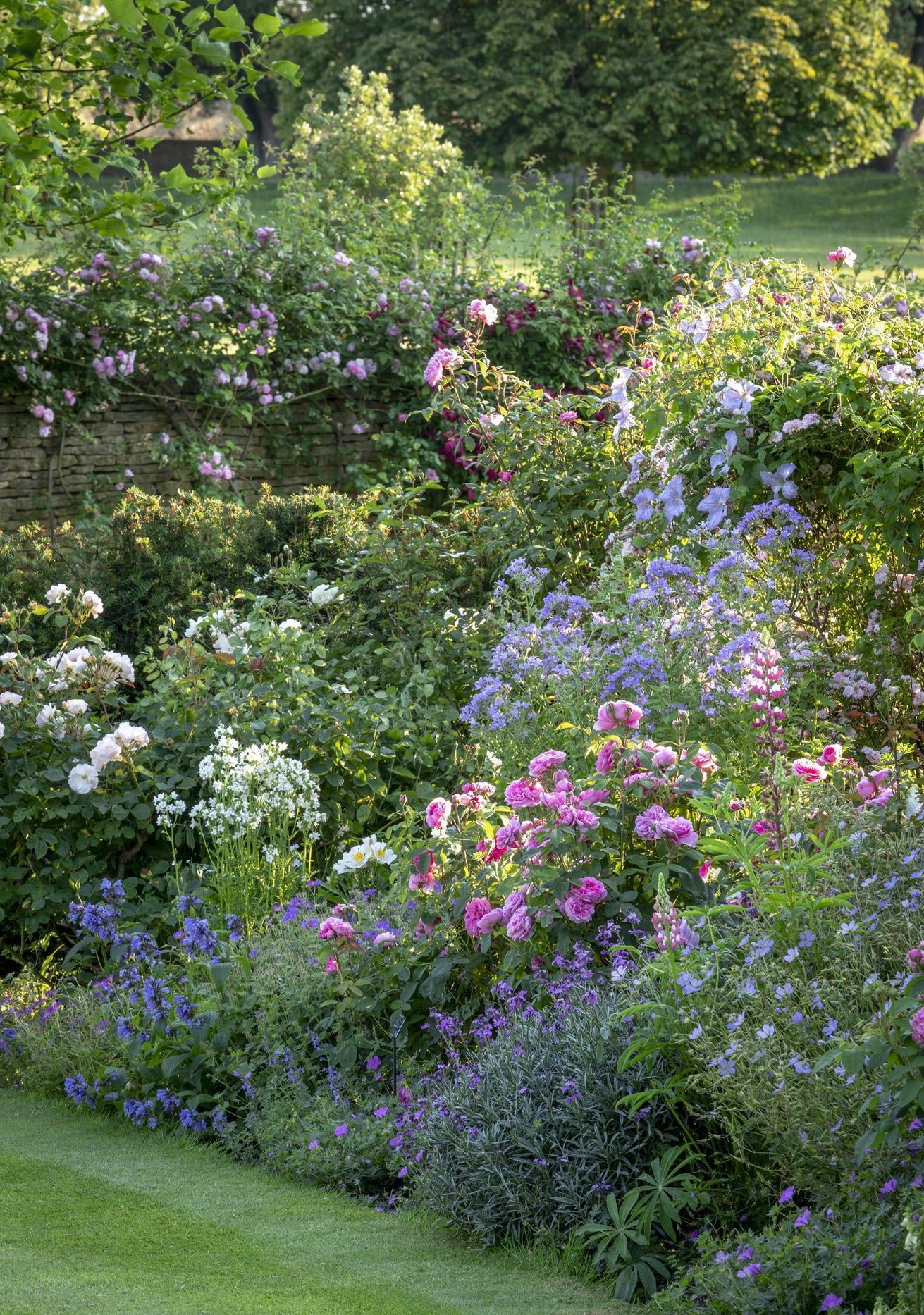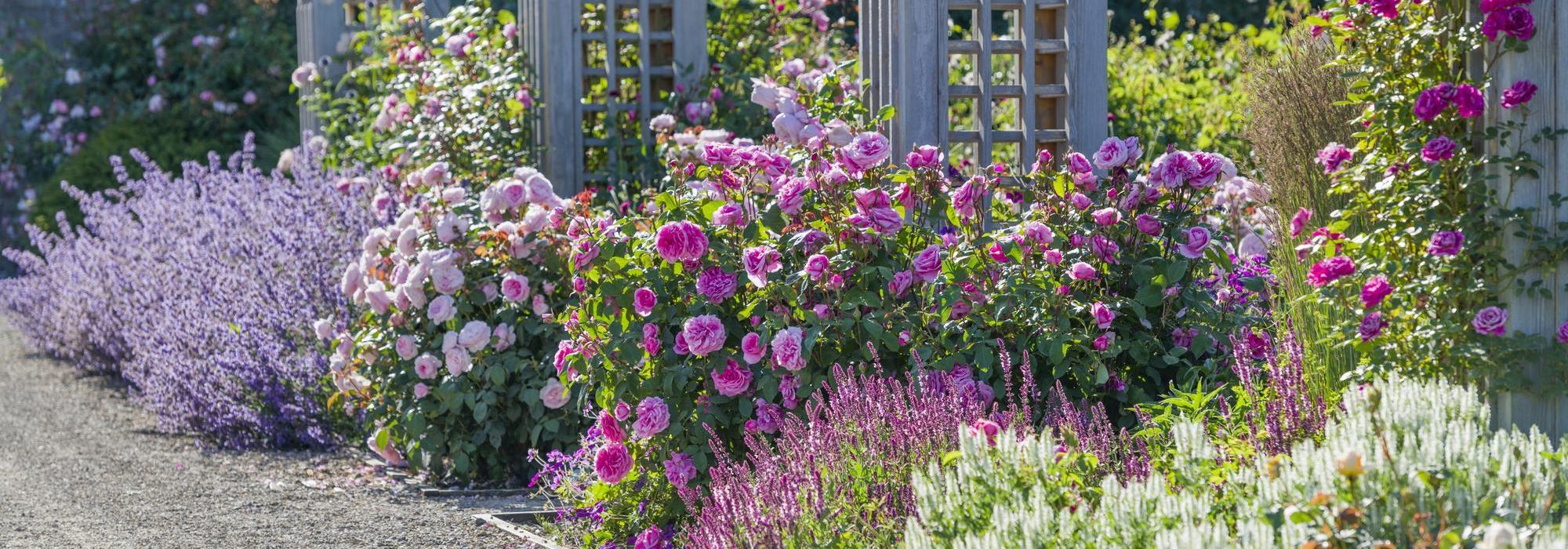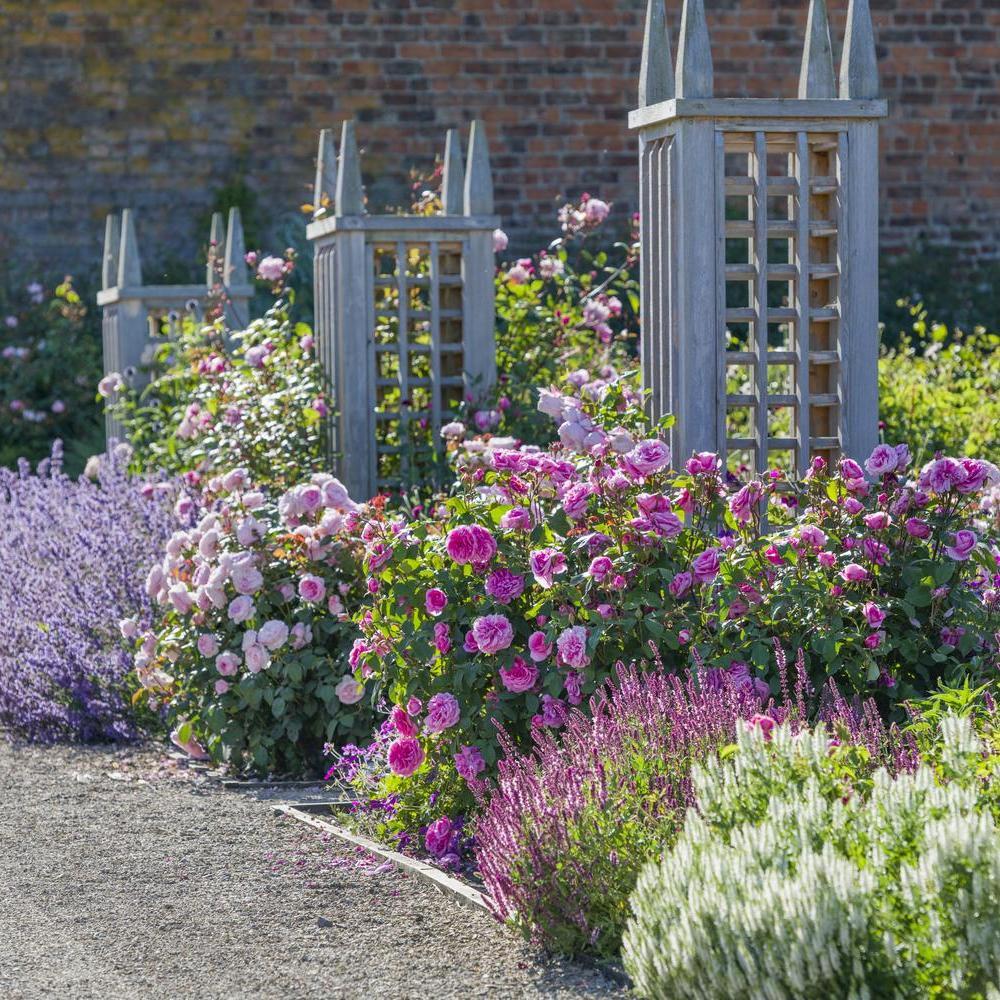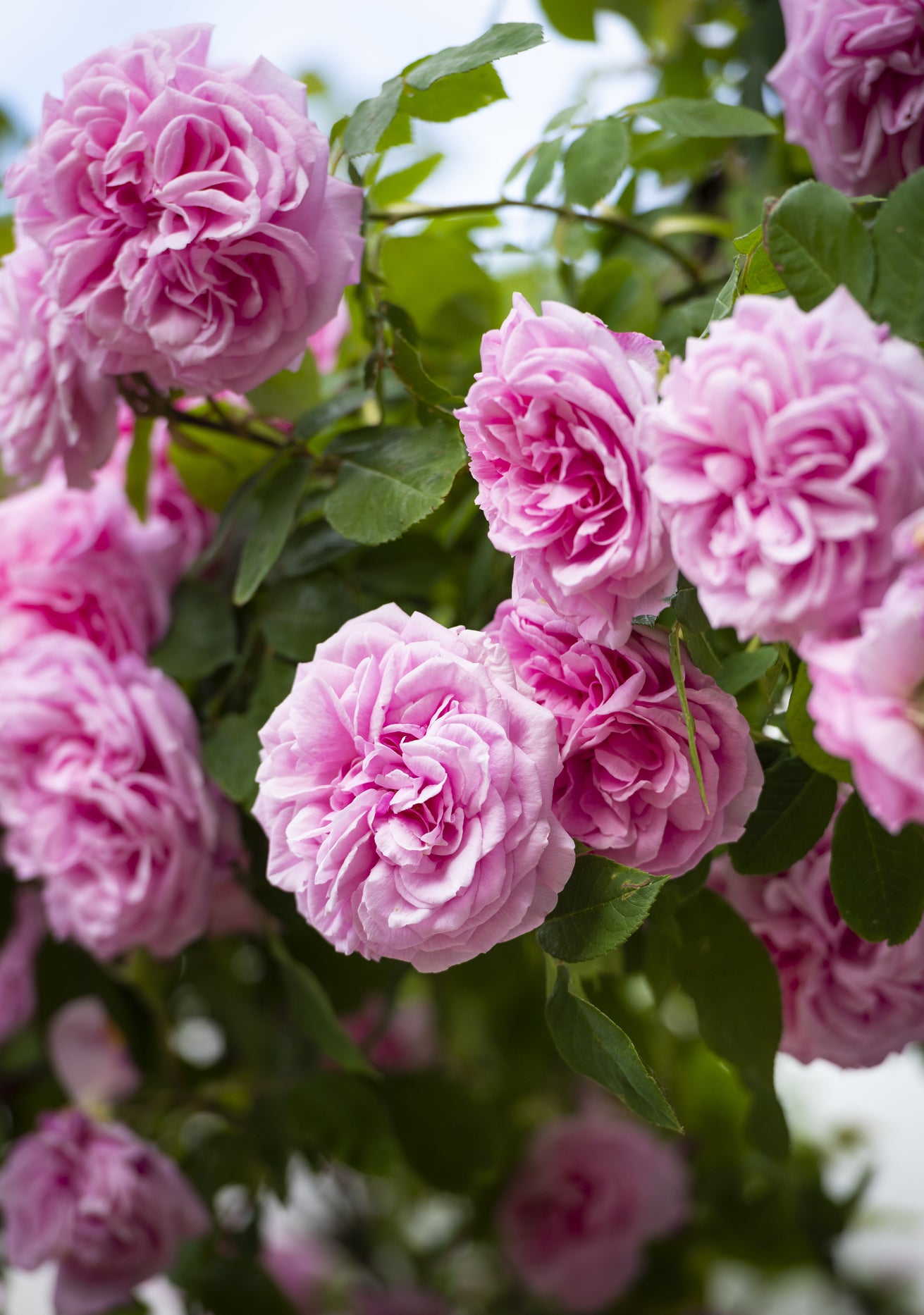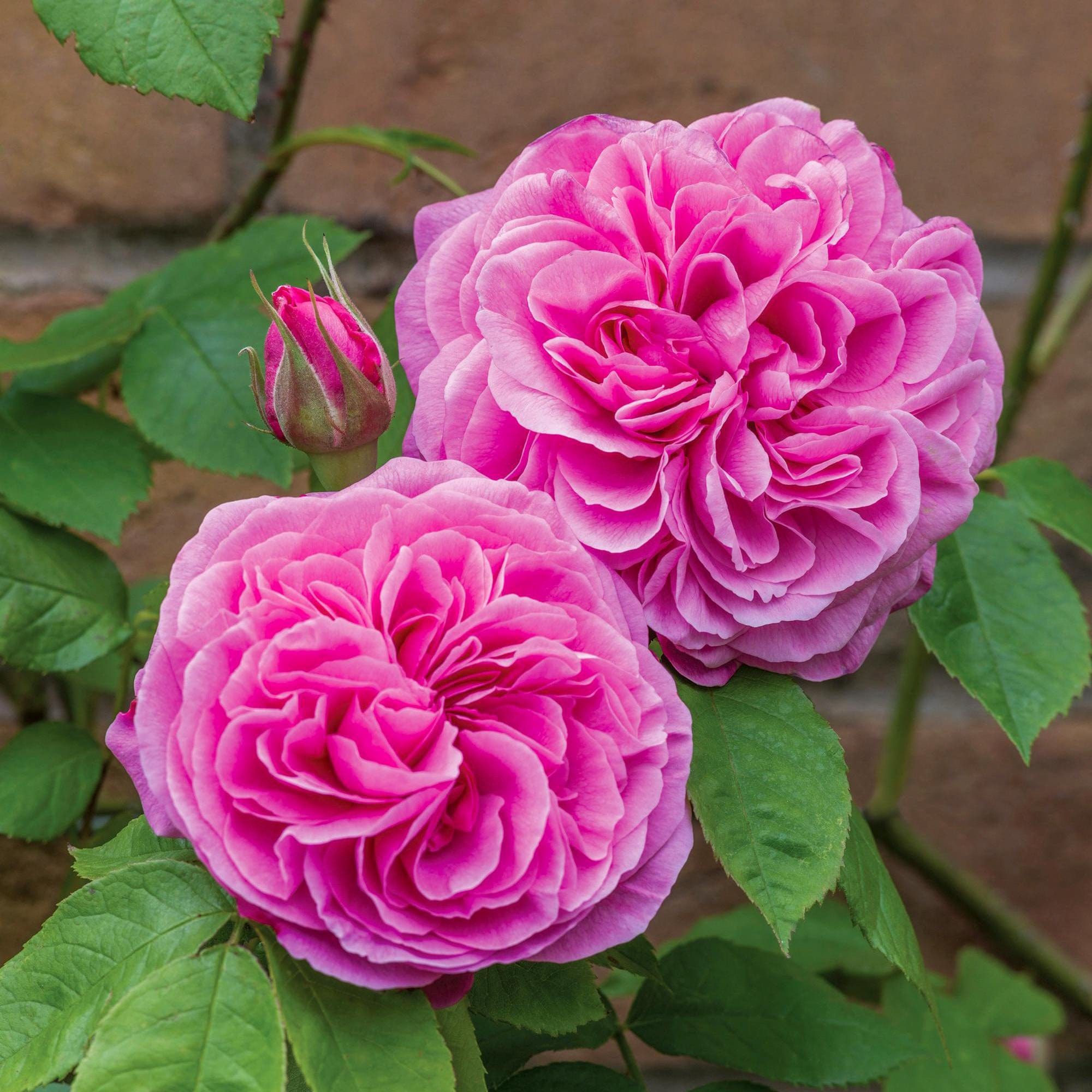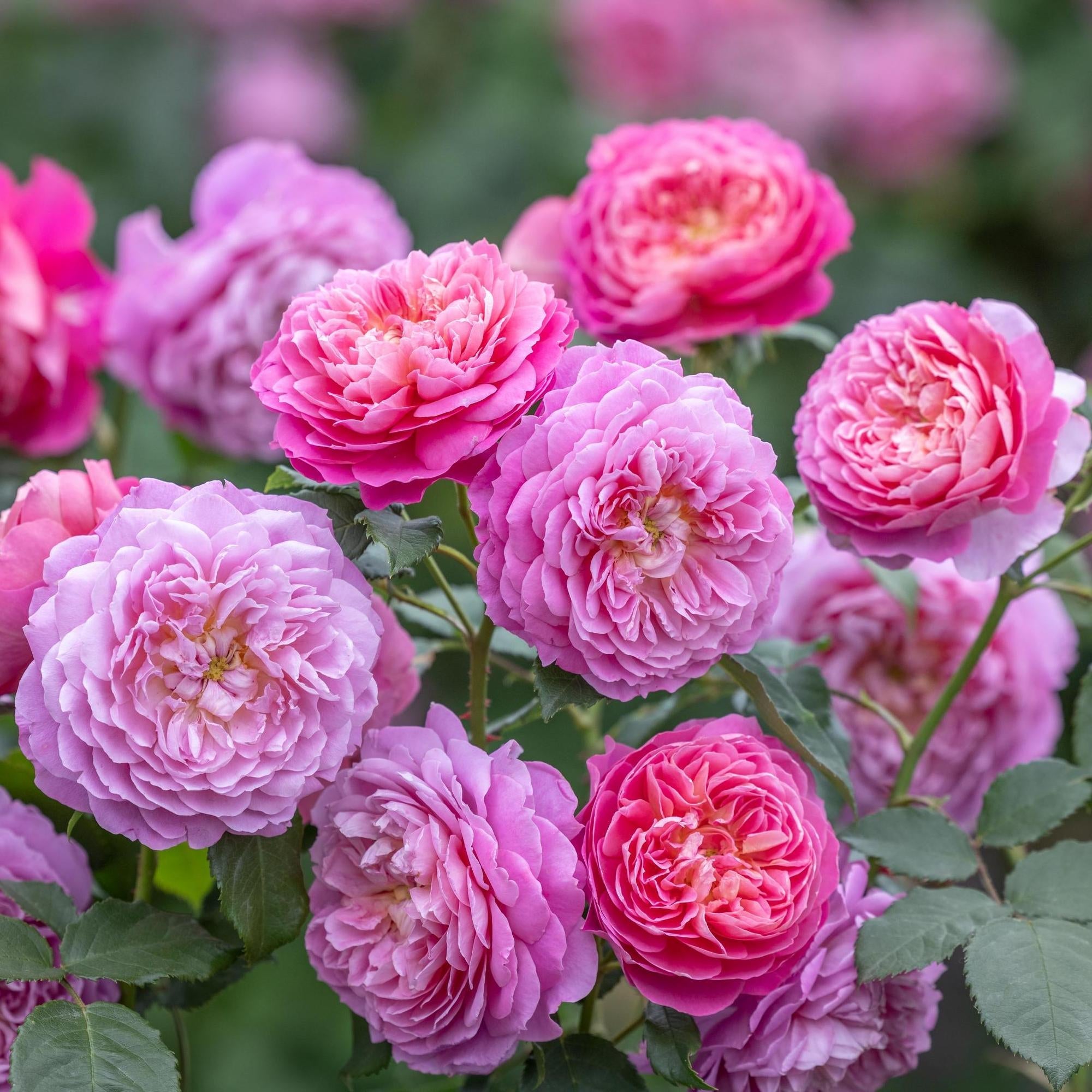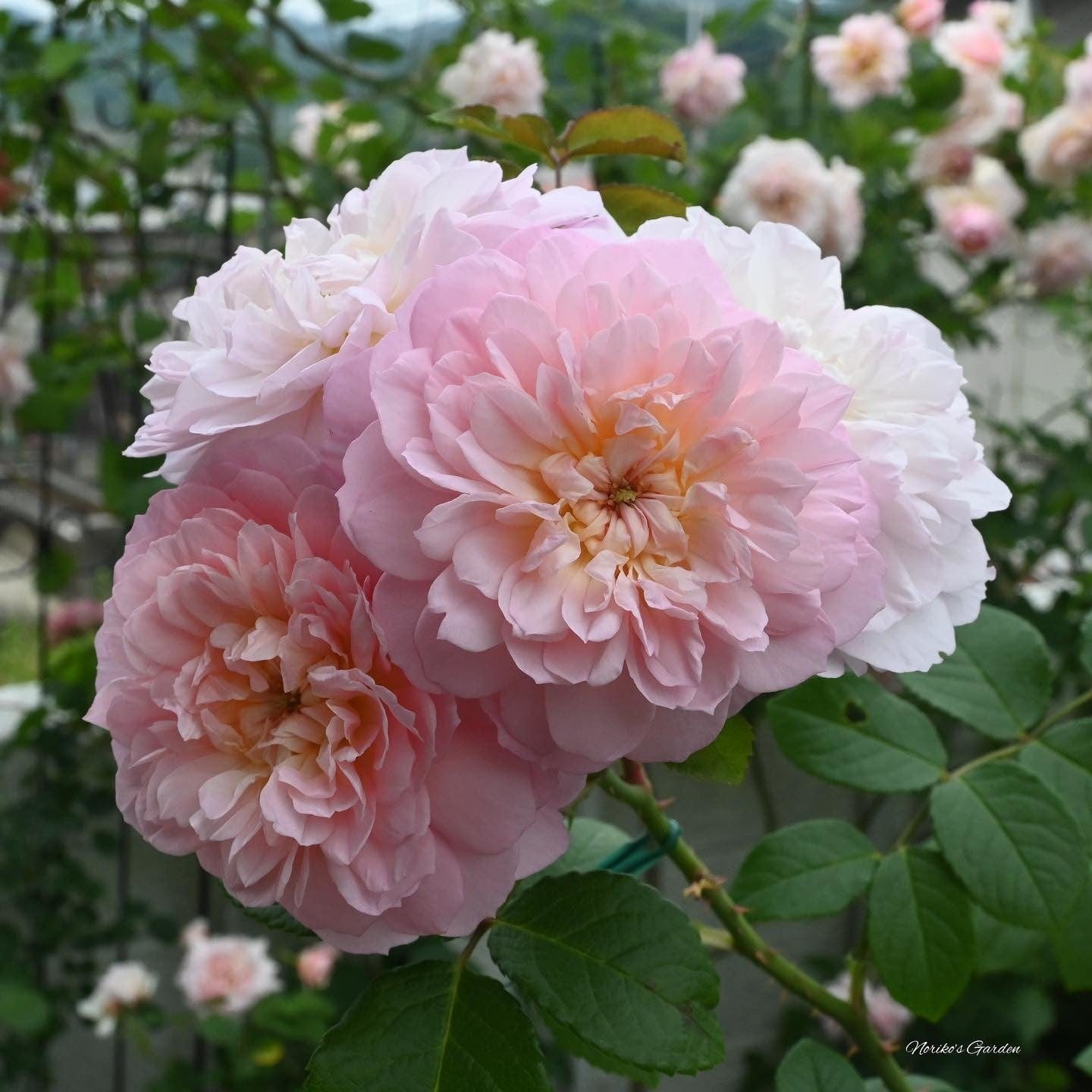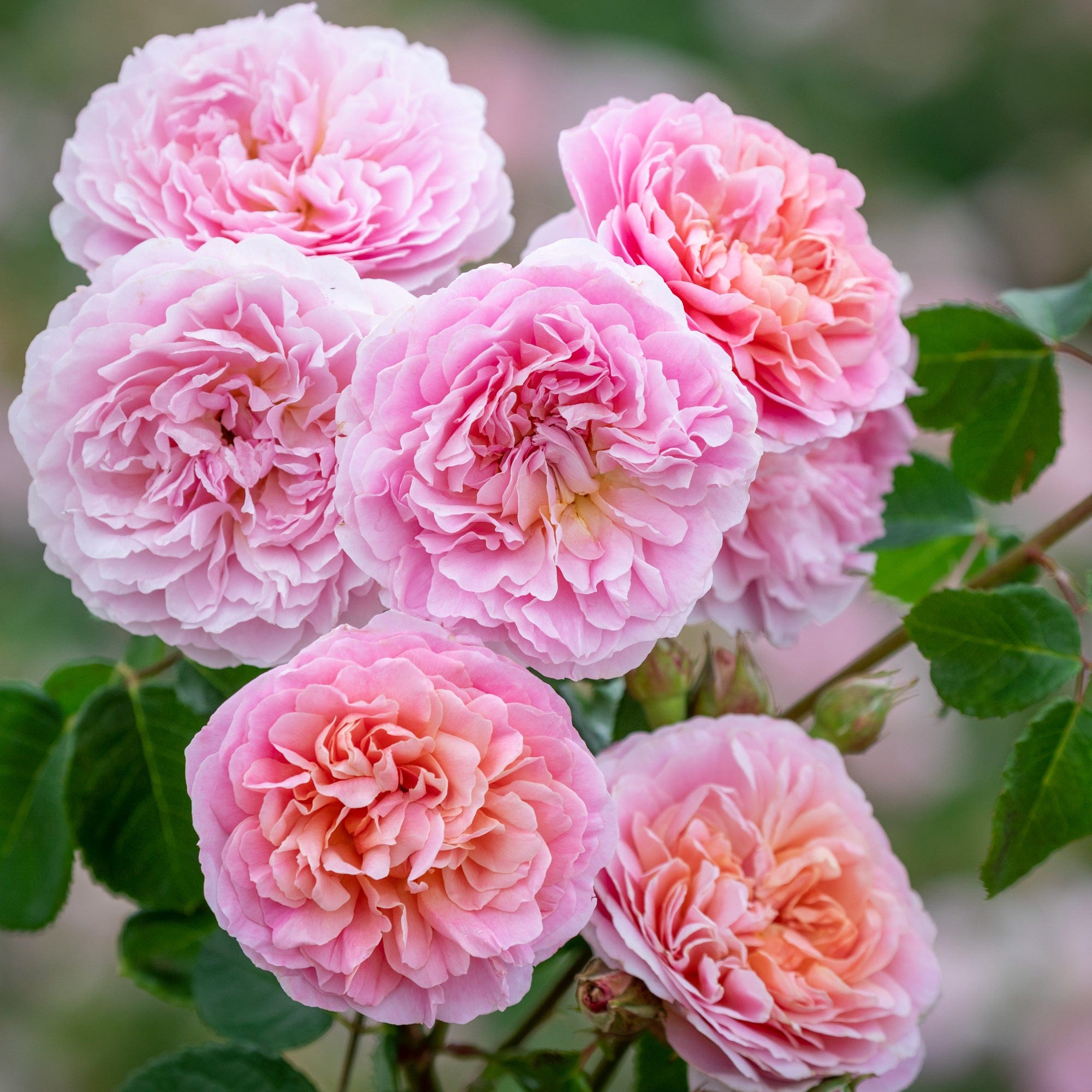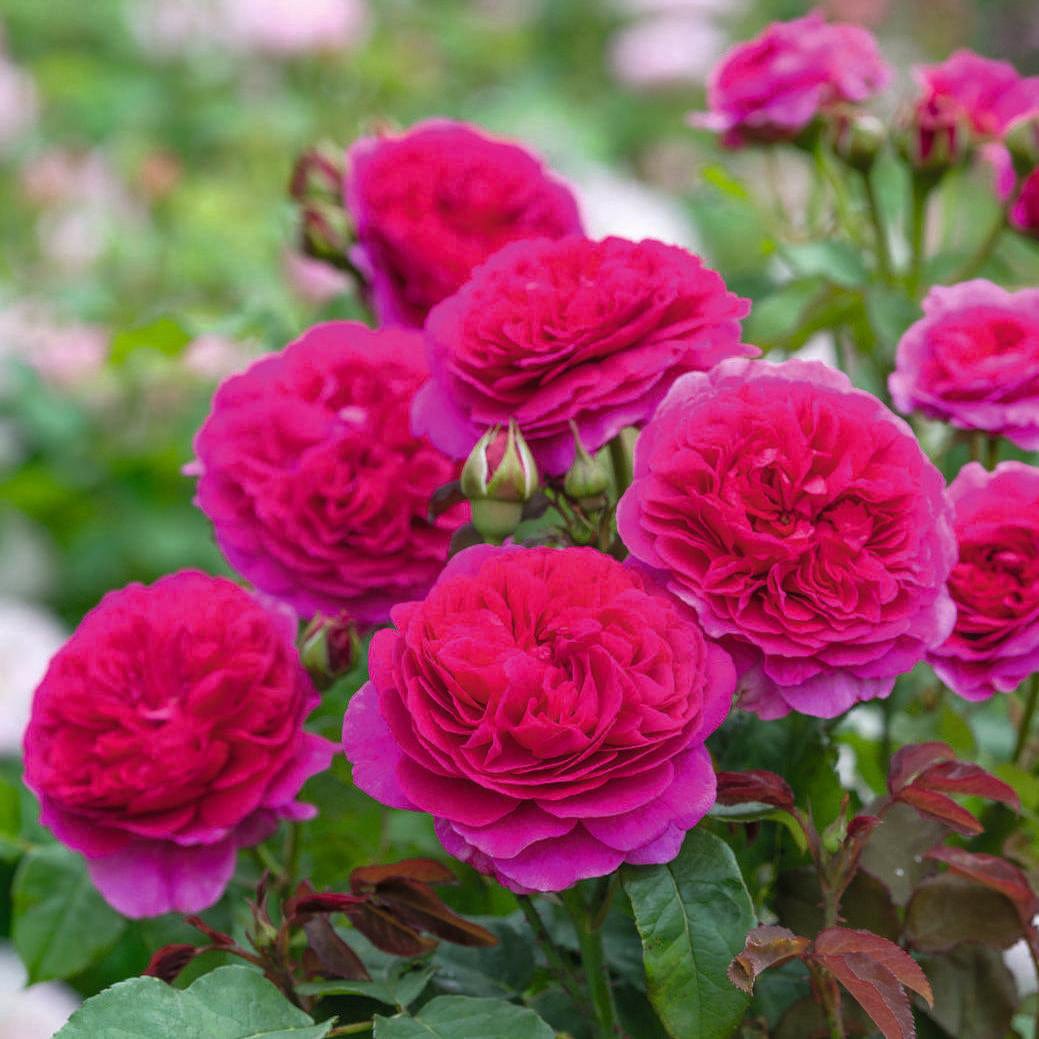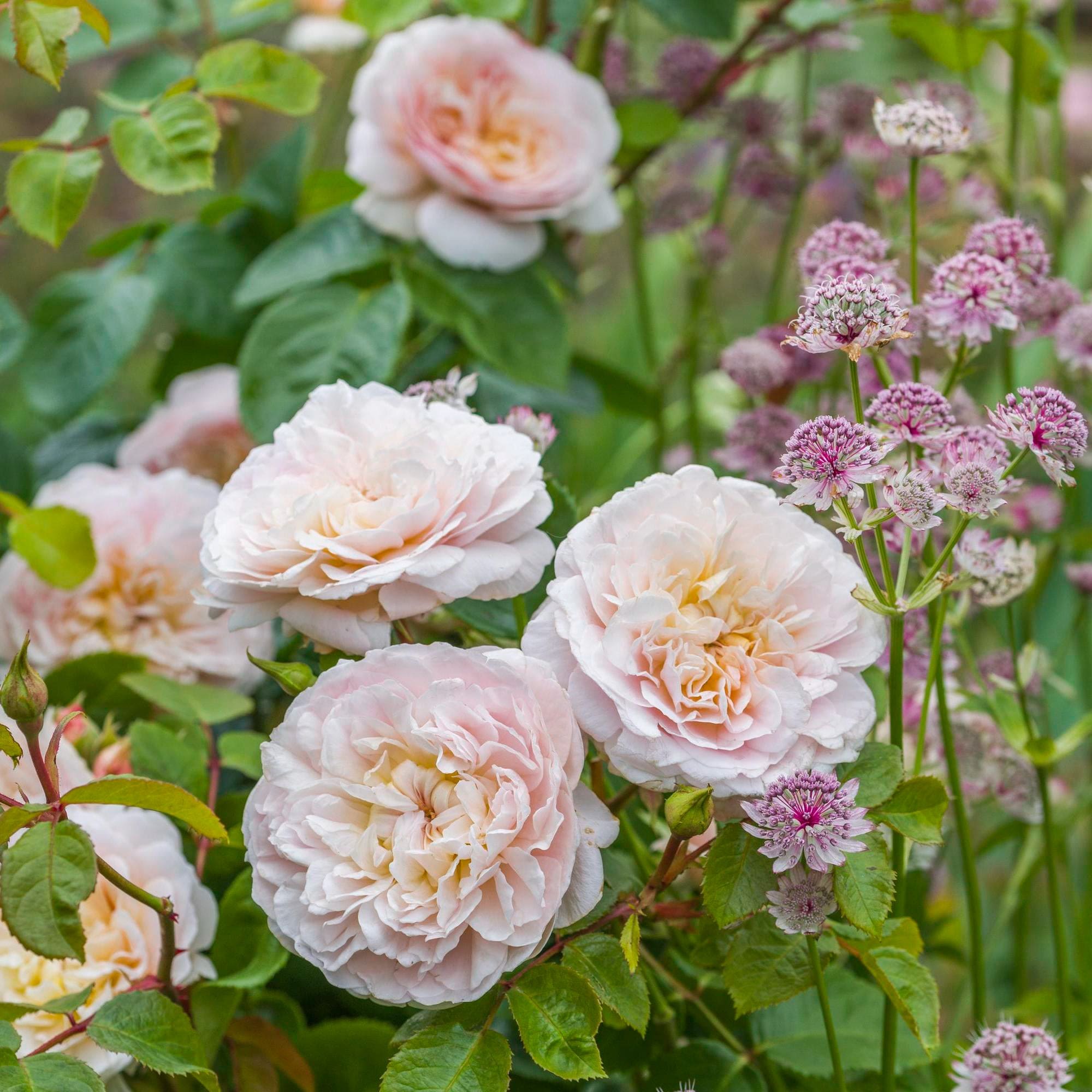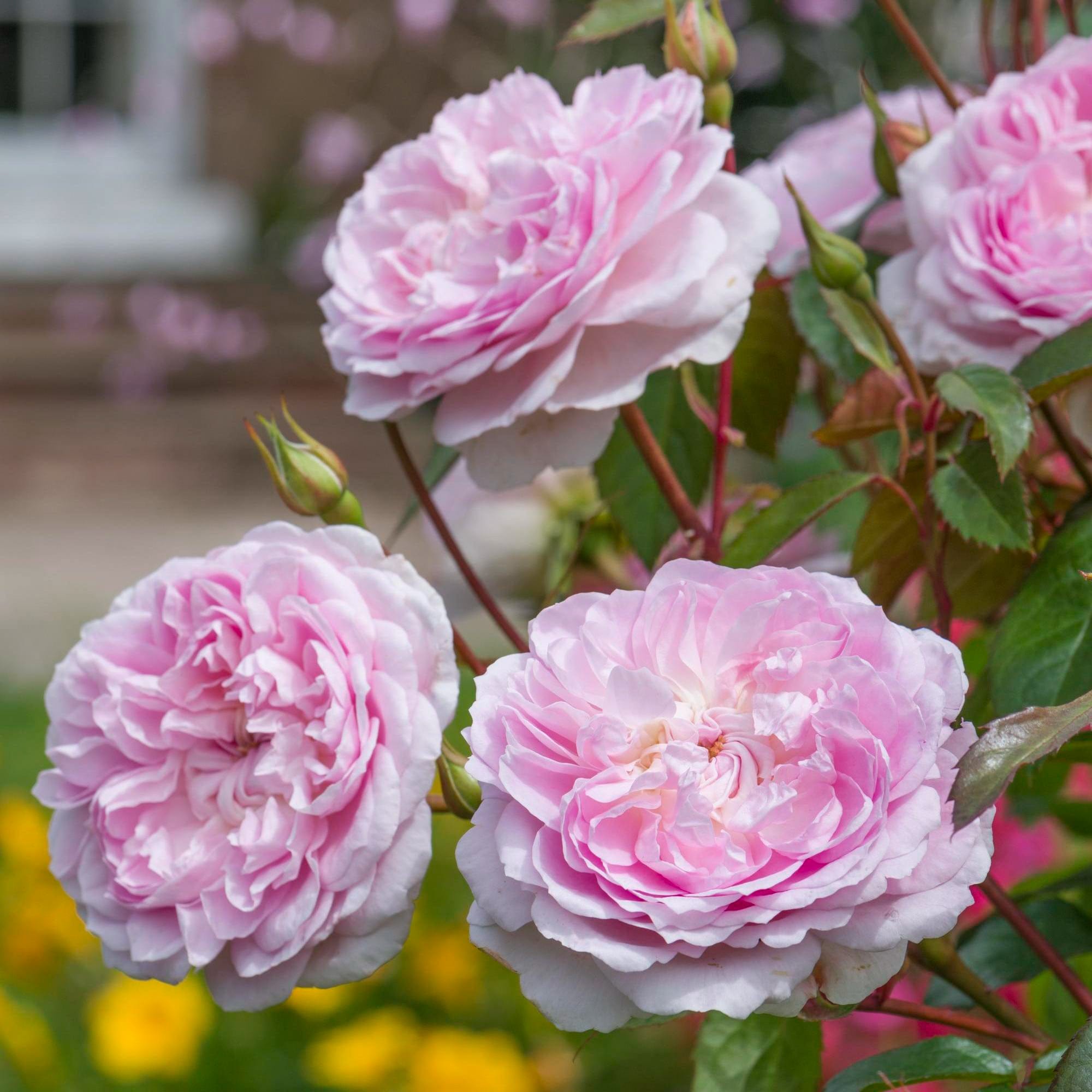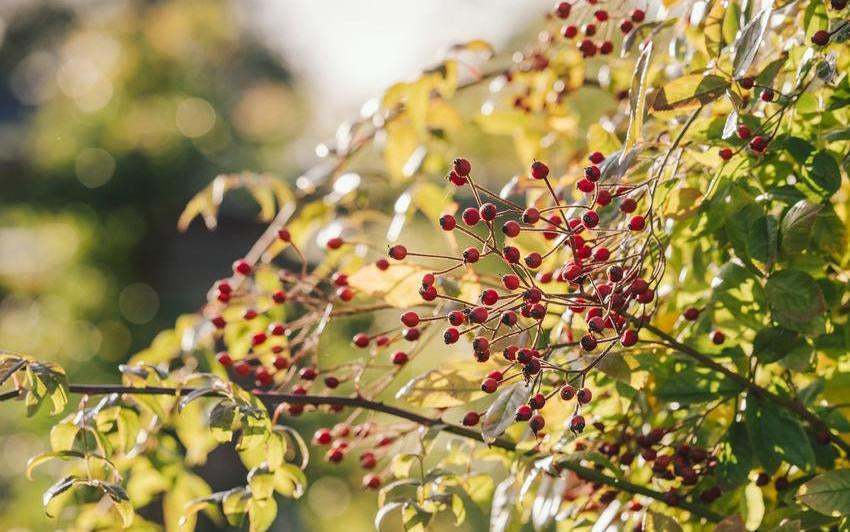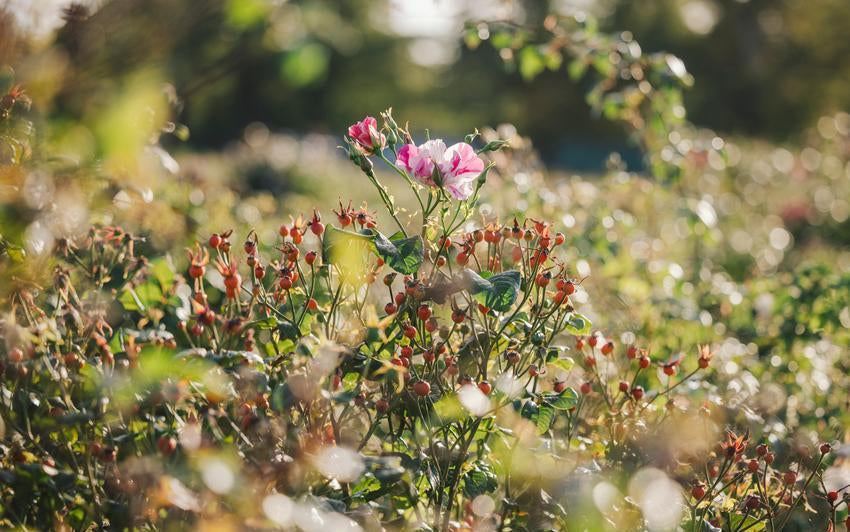Designing with Gertrude Jekyll
A Rose at Home in Every Border
Few roses are held in such regard as Gertrude Jekyll® (Ausbord). Valued for its rich, mid-pink blooms and one of the strongest Old Rose fragrances in cultivation, it has become a familiar name among gardeners. Yet it is not only the scent that secures its place. This is a rose with structure, presence and the ability to draw planting together. It offers more than a single season’s beauty. It gives shape to the garden and settles easily among other plants, whether used in formal arrangements or in looser, more naturalistic schemes.
Its namesake, Gertrude Jekyll, believed gardens should be painted with plants, composed with colour, movement and balance. Her planting often used subdued tones, silvered leaves, and a steady progression from upright to trailing forms. The rose that bears her name follows those same principles, though perhaps by instinct more than intention. It blends, it anchors, and it carries the weight of a scheme without drawing attention to itself too early.
A Rose with Flexibility
Gertrude Jekyll grows with quiet strength. As a shrub, it holds a clear, upright form, branching well and flowering steadily from early summer until autumn. Its shape is neither stiff nor sprawling. It stands with purpose, full of flower and leaf, and responds well to light training. When grown against a wall or fence in milder gardens, it becomes a short climber. The long, arching stems can be encouraged outwards, where the flowers hang at eye level or just above. From there, the scent drifts outwards, carried on still air or warm evenings.
Its adaptability makes it easy to place. In a mixed border, it can act as a natural focal point, providing rhythm without dominance. It can be repeated at intervals to guide the eye along a path or boundary. In narrower spaces, it holds its shape without demanding pruning into formality.
In the Spirit of Jekyll
Gertrude Jekyll’s design philosophy never relied on novelty. She placed trust in repetition, tonal harmony and the gradual unfolding of colour through the seasons. The rose that bears her name fits that approach. Its bloom is bold but not strident. The pink is clear and generous, deepening slightly toward the centre of the flower but never losing balance.
This makes it a natural partner for cooler, restrained schemes. Greys, greens and pale mauves all sit comfortably around it. Silver foliage such as Perovskia atriplicifolia or Artemisia 'Powis Castle' draws out the clarity of the rose without dulling it. Low, aromatic plants like Lavandula angustifolia or the looser form of Gaura lindheimeri provide contrast in structure and leaf, while allowing space around the base.
In borders with a more traditional English character, it pairs well with Alchemilla mollis, Nepeta or Salvia nemorosa. These help soften the transition between the rose and the surrounding planting, giving the impression of a border that has been lived in for some time.
A Planting Palette That Ages Well
The strength of Gertrude Jekyll’s colour lies in its clarity. Neither blush nor cerise, it occupies a balanced place within the spectrum. For gardeners working with colour, this makes it unusually accommodating. Deep green foliage sharpens it. Blue-greys and smoky purples give it depth. Tones of chartreuse or pale yellow lift it in the morning light. Against the dark backdrop of yew or hornbeam, it stands out just enough to be noticed without appearing staged.
Gertrude Jekyll often used dark foliage and structural planting to highlight colour and form. Brick walls, clipped evergreens or aged timber offered a muted background from which brighter tones could emerge more clearly. It was her belief that one should look closely and patiently at a flower to discover what it offers. “If you will take any flower you please, and look it over and turn it about and smell it and feel it and try to find out all its secrets,” she wrote, “you will discover many wonderful things.”
In more closely coordinated schemes, the rose can be used with others that share its poise. Varieties like Olivia Rose Austin® (Ausmixture), James L Austin™ (Auspike) and Harlow Carr (Aushouse) extend the flowering season and introduce variation in form and hue. Among older companions, Rosa Mundi is especially effective. Its striped blooms, open form and strong historical character offer contrast in colour while echoing the same depth of scent. Herbaceous plants such as Astrantia major, Eryngium planum or dusky Geranium cultivars help draw the eye outward, weaving seasonal change through the border.
Creating Flow and Movement
Jekyll's gardens were never static. She valued the rise and fall of plant forms, the lift of grasses in the breeze, the way umbels and spires caught the light. Gertrude Jekyll, the rose, acts as a centre of calm among more mobile companions. Its form is steady, allowing others to sway and lean around it.
Plants with looser habit such as Veronicastrum virginicum, Stipa tenuissima or Ammi majus help keep the eye moving through the border, rather than stopping too sharply on any one thing. These taller, lighter plants are not there to distract, but to soften and extend the rose’s effect across the space.
Positioned near a path, bench or threshold, the rose rewards those who linger. The scent builds with warmth and remains close to the flower. In still conditions, it gathers in the air, becoming part of the place rather than something applied to it.
A Rose to Build With
Gertrude Jekyll lends itself to many kinds of planting. It can be used alone, in pairs, or repeated with calm consistency across a scheme. It suits borders both large and small, and has enough presence to hold its place among shrubs and perennials without overstepping. Whether it grows beneath a window, beside a gate or along a sunny wall, it brings the same qualities: colour, form and a fragrance that draws people closer without needing to call them in.
In choosing this rose, one does not simply add a plant, but lay the groundwork for something that can last. It is a rose that settles in well. It matures with the garden. And in time, it begins to feel as though it has always been there.

